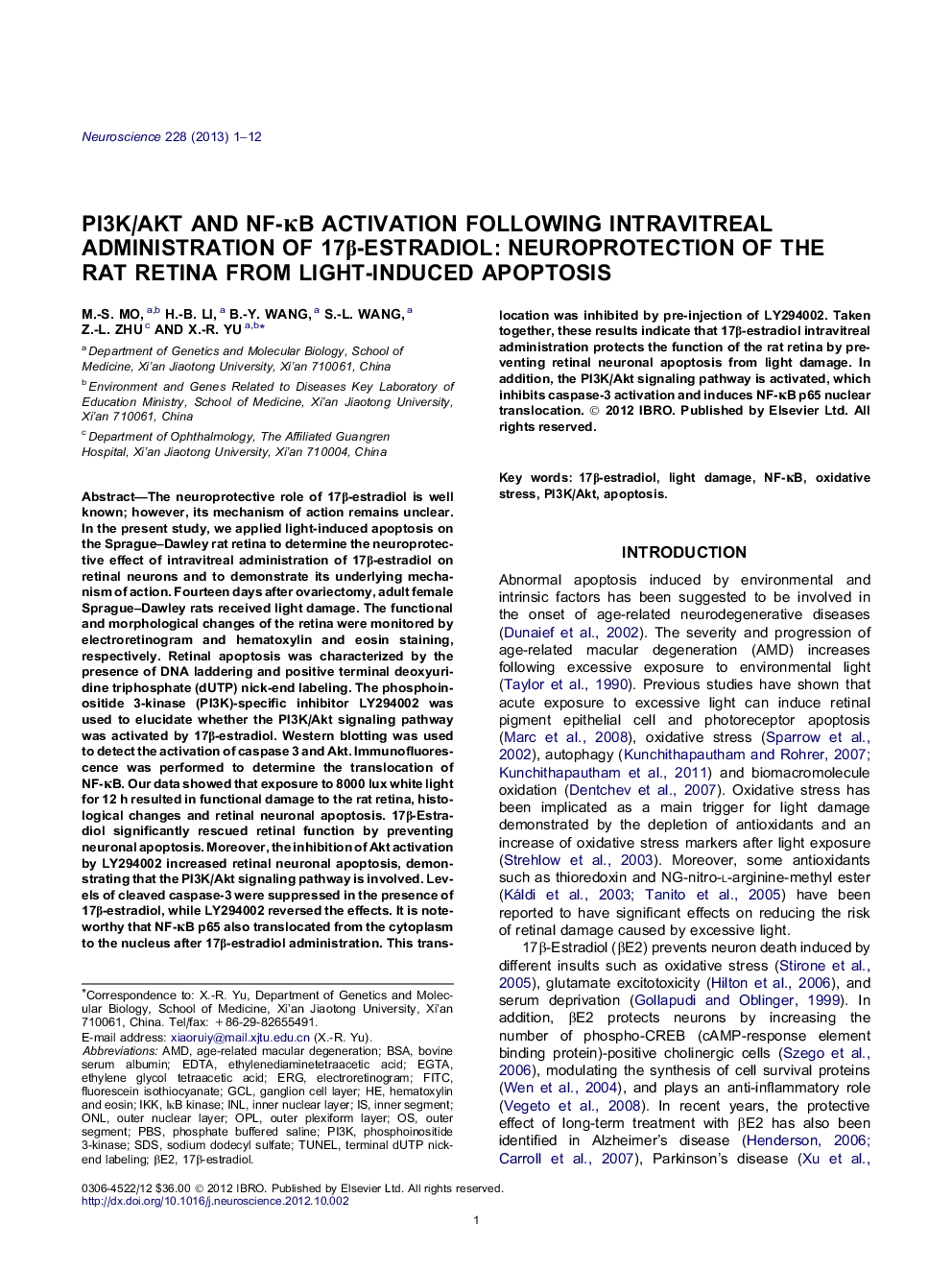| Article ID | Journal | Published Year | Pages | File Type |
|---|---|---|---|---|
| 6275274 | Neuroscience | 2013 | 12 Pages |
The neuroprotective role of 17β-estradiol is well known; however, its mechanism of action remains unclear. In the present study, we applied light-induced apoptosis on the Sprague-Dawley rat retina to determine the neuroprotective effect of intravitreal administration of 17β-estradiol on retinal neurons and to demonstrate its underlying mechanism of action. Fourteen days after ovariectomy, adult female Sprague-Dawley rats received light damage. The functional and morphological changes of the retina were monitored by electroretinogram and hematoxylin and eosin staining, respectively. Retinal apoptosis was characterized by the presence of DNA laddering and positive terminal deoxyuridine triphosphate (dUTP) nick-end labeling. The phosphoinositide 3-kinase (PI3K)-specific inhibitor LY294002 was used to elucidate whether the PI3K/Akt signaling pathway was activated by 17β-estradiol. Western blotting was used to detect the activation of caspase 3 and Akt. Immunofluorescence was performed to determine the translocation of NF-κB. Our data showed that exposure to 8000 lux white light for 12 h resulted in functional damage to the rat retina, histological changes and retinal neuronal apoptosis. 17β-Estradiol significantly rescued retinal function by preventing neuronal apoptosis. Moreover, the inhibition of Akt activation by LY294002 increased retinal neuronal apoptosis, demonstrating that the PI3K/Akt signaling pathway is involved. Levels of cleaved caspase-3 were suppressed in the presence of 17β-estradiol, while LY294002 reversed the effects. It is noteworthy that NF-κB p65 also translocated from the cytoplasm to the nucleus after 17β-estradiol administration. This translocation was inhibited by pre-injection of LY294002. Taken together, these results indicate that 17β-estradiol intravitreal administration protects the function of the rat retina by preventing retinal neuronal apoptosis from light damage. In addition, the PI3K/Akt signaling pathway is activated, which inhibits caspase-3 activation and induces NF-κB p65 nuclear translocation.
Graphical abstract17β-Estradiol protects rat retina by preventing neuronal apoptosis from light damage, and inducing NF-κB p65 nuclear translocation.Download high-res image (120KB)Download full-size imageHighlights⺠Intravitreal administration of βE2 prevents photoreceptor apoptosis. ⺠βE2 inhibits caspase-3 activation by PI3K/Akt signaling pathway. ⺠βE2 induces NF-κB p65 nuclear translocation by PI3K/Akt signaling pathway.
